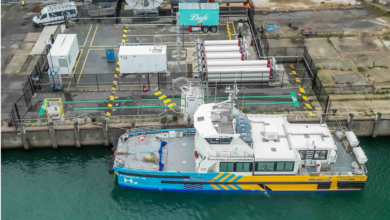Electra tests hybrid eSTOL aircraft engine
Electra’s eSTOL aircraft uses this patent-pending technology for the urban and regional aircraft market.

Electra.aero, Inc. has completed a fully integrated test of the proprietary hybrid-electric propulsion system for its low-carbon emissions, electric short takeoff and landing (eSTOL) aircraft.
The testing is moving Electra closer to leveraging its hybrid engine technology to significantly reduce aircraft emissions, noise, and operating costs.
The hybrid system is being integrated into Electra’s piloted technology demonstrator aircraft to demonstrate and test Electra’s eSTOL ultra-short takeoff and landing performance and fuel burn savings. The technology was first developed for Electra’s 9-passenger eSTOL aircraft and will later be scaled to larger aircraft.
Hybrid-electric propulsion is Electra’s first step on a path to zero-emissions air mobility. It is the only sustainable technology that can meet range requirements for the regional air mobility market. Electra’s eSTOL aircraft is designed so that hydrogen and battery-electric propulsion systems can be used in the future when those technologies are commercially viable.
To support these long-range goals, Electra is exploring green hydrogen with its partner Plug Power, the leading hydrogen fuel cell turnkey solutions provider.
Testing of the hybrid-electric system took place at Electra’s propulsion development facility in Switzerland. Electra’s hybrid system uses a combination of high-power battery packs and a turbogenerator to power eight electric motors and propellers.
JP Stewart, Electra’s VP and General Manager, said, “Tightly coupling airframe and propulsion systems is the hallmark of Electra’s unique and scalable approach to providing net-zero emissions for regional and transport-category aircraft by 2050.”
